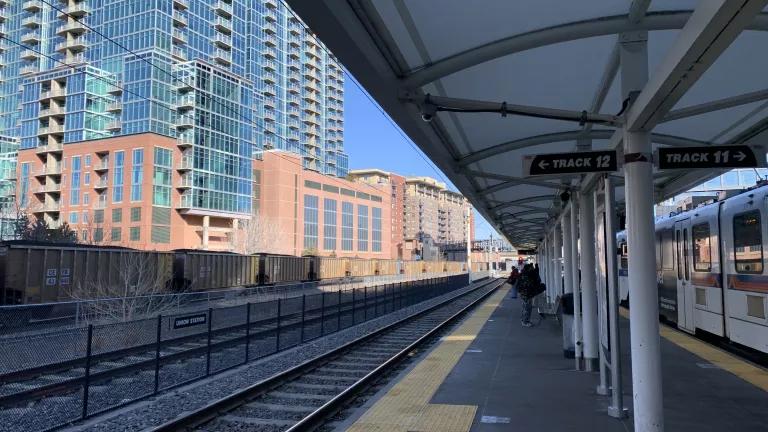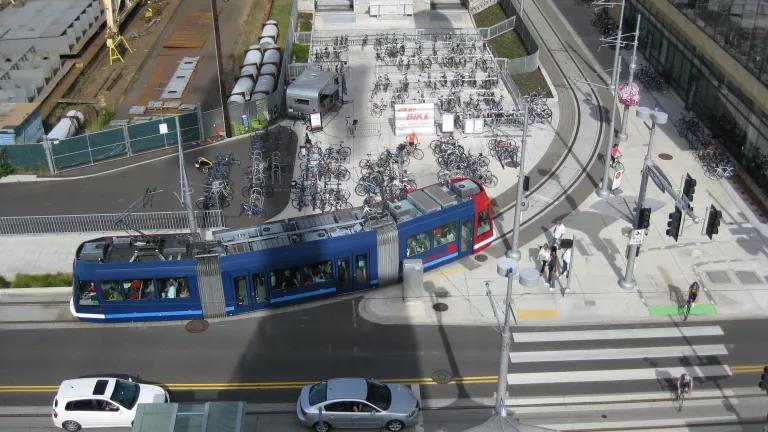In the absence of federal transportation dollars, state and local agencies are scrambling for ways to keep this country moving. A few have been testing a strategy that policy experts have long recommended, called value pricing. The idea behind value pricing is to create variable prices for our transportation choices that reflect the true cost of those choices.
Every time we drive, we inflict wear and tear on roads and bridges. We create traffic congestion and pollution. When we park, we use land – which we now know has value as a water filtration system or wildlife habitat when undeveloped. So if you want to use a road or bridge or parking space at the same time everyone else does, it’s going to cost you more – just like airline tickets on holiday a weekend.
For a politician, this might seem like a hard sell. A lot of voters are already paying through their noses for gas, and many have no other real option but to drive. But a recent poll of people familiar with value pricing in their cities shows high levels of support for the system.
The truth is, you get what you pay for. That’s why America’s infrastructure ranking has dropped from 6th to 23rd in the world. Our transportation system is failing because we have failed to invest in it. And we can’t, like a house that we can no longer afford to maintain, offload it and move into a condo. Even if our goal were to have a transportation infrastructure that’s merely serviceable, we still have to find ways to pay for it.
In some ways, we’re already paying for clogged roads, but without any return on investment. According to the Federal Highway Administration, in the 10 most congested areas in the country, each rush-hour traveler loses $850 to $1,600 annually in time and fuel, and spends the equivalent of almost 8 workdays each year stuck in traffic.
I’ve mentioned other funding strategies before, such as shifting oil and gas subsidies into the transportation program, and starting an infrastructure bank for transportation. But value pricing is also a proven means to reduce costly traffic congestion. It allows for faster trips, more predictable travel times, and pollution reduction. There’s more room for emergency vehicles to operate, and more revenue for transportation projects – so everyone, from residents and pedestrians to bus riders and car drivers, benefits.
Several cities are testing some new pricing measures, such as “dynamic” tolls that change according to congestion levels or time of day, or highway lanes accessible only to toll-paying or high-occupancy vehicles. San Diego’s FasTrak system, for example, levies a toll of $0.50 to $8.00 (depending on congestion) for single-occupancy vehicles to travel in a 16-mile express lane on I-15, while buses and carpoolers can travel for free. FasTrak raises about $1 to $2 million each year in tolls, and about half that revenue is used to fund bus service. The system has been considered such a success that the city is expanding it to 20 miles of I-15 between San Diego and Escondido. A new Bus Rapid Transit service, partially funded by FasTrak revenues, will also operate on the route.
London introduced a zone-based pricing system in 2003, which charges a fee to private cars entering the heart of the city. Traffic congestion has since dropped 25 percent and bus ridership increased 37 percent in the congestion zone. No U.S. city has yet instituted a zone-based pricing system, despite its proven effectiveness in reducing congestion in London, Singapore and Stockholm. Portland, however, is mandated by Oregon law to launch a pilot program this fall, and San Francisco is seriously considering starting congestion pricing by 2015.
Variably-priced street parking meters can also help reduce congestion. San Francisco is leading the way on this strategy, not only adjusting prices to meet demand, but wiring parking spaces with sensors that can feed data to drivers via the web and cell phones. Studies show that on average, 30 percent of congestion on city streets is due to drivers circling for free street parking, while paid spaces in garages go empty. San Francisco’s system should help drivers find a space in the price range they want, saving time and fuel.
The crisis in transportation funding could be a turning point for wider implementation of value pricing. Demand-based pricing strategies like dynamic tolling could play a major role in keeping America moving, especially in this era of tightened belts. By reducing congestion, value pricing helps drivers and businesses save time and fuel, and also helps cash-strapped state and local authorities raise revenue to maintain and improve our transportation network.



